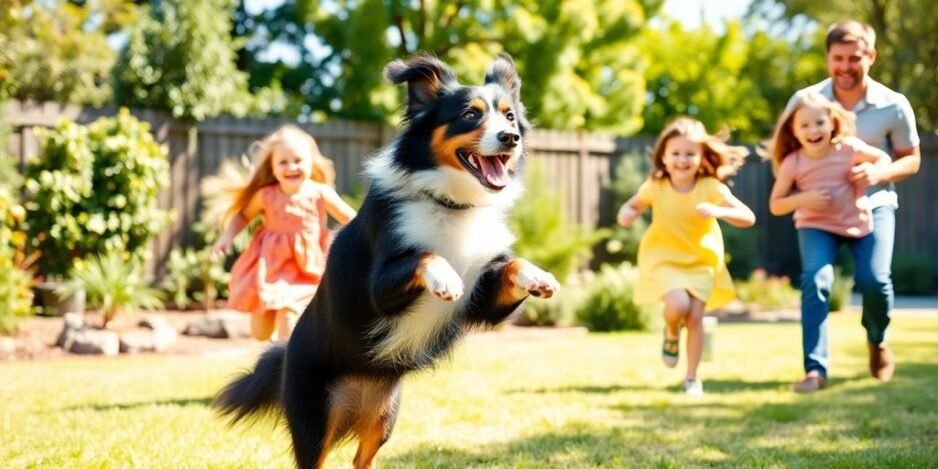-

·
Beyond the Beauty: The Intelligent Heart of the Sheltie
Beyond the Beautiful Coat: The Sheltie’s Temperament – A Smart, Sensitive, and Loyal Companion Are you curious about what makes Shetland Sheepdogs -or Shelties – so special? While their stunning coats often steal the spotlight, their intelligence, emotional depth, and loyal nature truly set them apart. In this in-depth guide, we explore the temperament of the Sheltie, their history, care…
-

·
Bearded Collie: The Shaggy Superhero of the Canine World
🐾 Bearded Collie Dog Breed Guide: The Shaggy Superhero of the Canine World The Bearded Collie, or “Beardie” as they’re affectionately known, is a lovable, energetic breed with a heart of gold and a face full of fur. With their bouncy personalities and distinctive beards, Beardies are truly one-of-a-kind companions. Whether you’re looking for a…
-
·
The Truth About Border Collies and Physical Affection
Do Border Collies Like to Cuddle? Facts & FAQ Are Border Collies Not Cuddly? Border Collies can be cuddly, but it’s not a guarantee. Their affection depends on personality, upbringing, and energy levels. Some owners swear their collies are “velcro dogs,” while others say, “Border Collies I’ve had aren’t cuddly.” Reddit threads (“Are border collies…
-

·
High Energy Border Collie: Can You Handle It?
The Not-So-Great Side of Border Collies: What You Should Know Border Collies are often seen as the ultimate dog breed—intelligent, energetic, and incredibly loyal. However, before you decide to bring one into your home, it’s essential to understand that they come with their challenges. This article will explore the not-so-great aspects of owning a Border…
-

·
Owning a Smooth Collie: Unleashing the Energy & Love
Smooth Collie: Complete Guide to Care, Temperament, and Training The Smooth Collie, often overshadowed by its long-haired cousin Lassie (the Rough Collie), is a hidden gem in the herding dog world. With their sleek coats, sharp intelligence, and affectionate personalities, these dogs are ideal for active families or individuals seeking a loyal companion. But is…
-
·
Black Pants Beware: The Truth About Smooth Collie Shedding
Do Smooth Collies Shed? Here’s the Truth You’re wearing black pants, and your Smooth Collie trots by. Suddenly, your outfit looks like it’s been dusted with fur. Is this normal? The short answer: Yes, Smooth Collies shed year-round. They have a double coat that sheds moderately, with heavier “blowing coat” seasons in spring and fall.…
-
·
The Truth About Border Collies & Blueberries
Can Border Collies Eat Blueberries? Here’s What You Need to Know You’re chopping blueberries for your morning oatmeal, and your Border Collie’s eyes lock onto the juicy berries. Can they have one? The short answer: Yes, Border Collies can eat blueberries in moderation. They’re a safe, low-calorie snack packed with vitamins and antioxidants, but portion…
-

·
Raising a Rough Collie: Essential Tips for New Owners
The Regal Rough Collie: A Breed Steeped in History and Family Fun The Rough Collie, with its regal appearance and heartwarming loyalty, is more than just a pretty face. Whether you’re drawn to their Lassie-like charm or their gentle temperament, these dogs make exceptional family companions. Here’s your ultimate guide to raising a happy, healthy…
-
·
Matching Your Lifestyle to the Right Breed
Collie vs. Border Collie: Which Herding Hero Fits Your Lifestyle? So, you’re torn between adopting a Collie or a Border Collie? Both breeds have stolen hearts worldwide—thanks to Lassie’s noble charm and the Border Collie’s legendary agility. But while they share a herding heritage and striking intelligence, these dogs are as different as Netflix and…